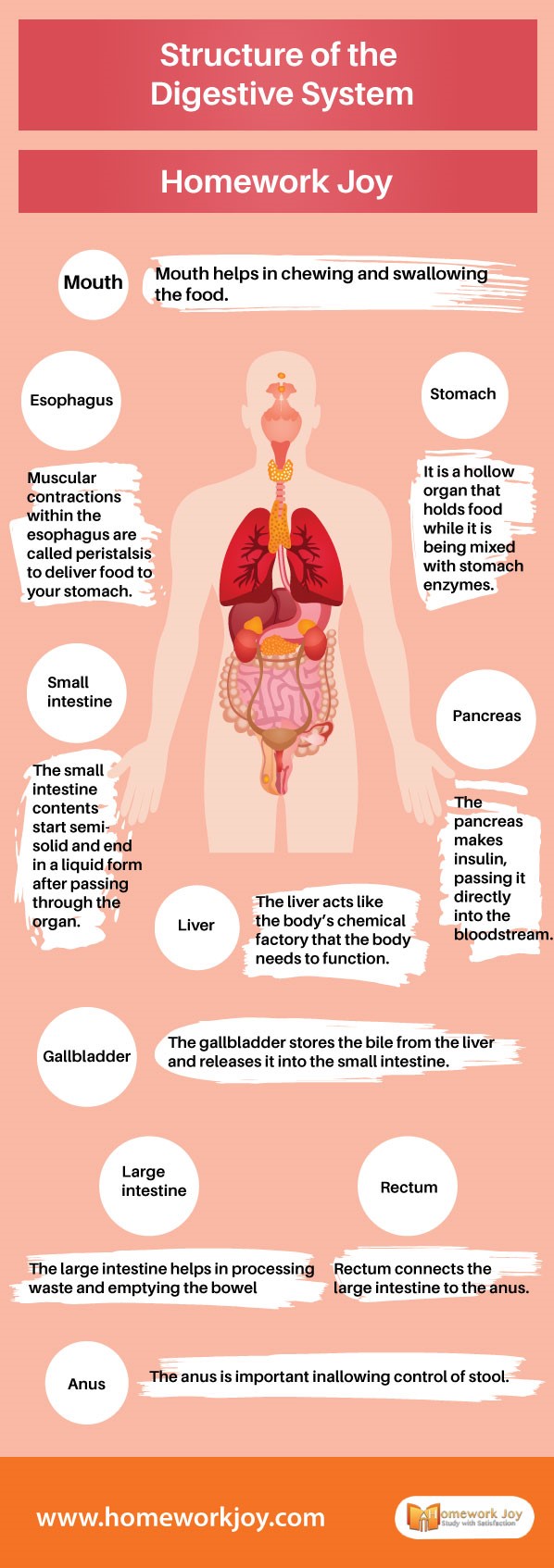Have you ever wondered what the structure of the Digestive System is? The digestive system is the means by which tissues and organs receive nutrients to function. The digestive system breaks down food, extracts nutrients from it, and converts them into energy. Let’s see how it works.
-
Mouth
Mouth helps in chewing and swallowing the food. The digestion starts here as soon as you take the first bite of a meal. Chewing breaks the food into pieces, while saliva mixes with food to begin the process of breaking it down into a form your body can absorb.
-
Esophagus
It is a tube that extends from the pharynx to the stomach. Muscular contractions within the esophagus are called peristalsis to deliver food to your stomach.
-
Stomach
It is a hollow organ that holds food while it is being mixed with stomach enzymes. When it leaves the stomach, food is transformed into a liquid or paste.
-
Small intestine
The small intestine contents start semi-solid and end in a liquid form after passing through the organ. The small intestine breaks down food by using enzymes released by the pancreas and bile from the liver. Bile is a component that aids in the digestion of fat and eliminates waste products from the blood.
-
Pancreas
It secretes the enzymes that break down protein, fats, and carbohydrates. It makes insulin, passing it directly into the bloodstream. Insulin is an essential hormone in your body for metabolizing sugar.
-
Liver
The liver performs various functions, but its main job within the digestive system is to process the nutrients absorbed from the small intestine. It also detoxifies harmful chemicals from the body. It acts like the body’s chemical factory that the body needs to function.
-
Gallbladder
The gallbladder stores the bile from the liver and releases it into the small intestine.
-
Large intestine
The large intestine helps in processing waste and emptying the bowel. It is a 6-foot long tube that connects the small intestine to the rectum. Normally, it takes about 36 hours for stool to get through the colon. The stool itself is food debris and bacteria. The “good” bacteria perform several functions, such as synthesizing various vitamins, processing waste products, food particles, and protecting against harmful bacteria.
-
Rectum
The rectum is an 8-inch chamber that joins the colon and anus. The rectum performs the job to receive stool from the colon and let you know that there is stool to be evacuated (pooped out) and to hold the stool until evacuation happens.
-
Anus
The anus is encircled by sphincter muscles that are essential in allowing control of stool.
